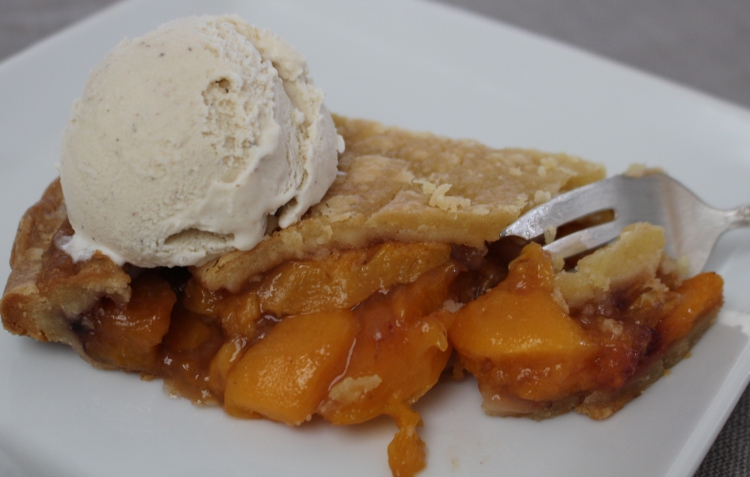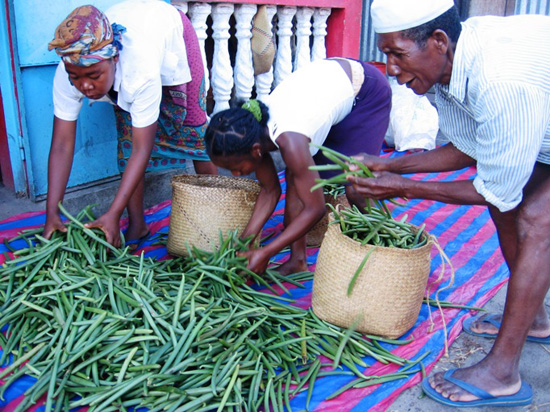
I'm amazed at how superior your vanilla is!
– Des, The Grommet
Does a cow eat grass because she enjoys it? Does she have a favorite grass? I can’t answer that
question. Do the deer eat my tulips, geraniums and columbines because they like them? YES! I
am sure of that. While animals eat to survive, most people eat because they enjoy the flavors of
the foods they are accustomed to. When you go to your favorite restaurant the food comes out
beautifully prepared, but if it doesn’t taste good, who cares how it looks!
Getting the flavor of the food right is the greatest challenge for any cook. We have all been to a
backyard barbecue where the “chef” has abused his spice cabinet so badly that you couldn’t
decide if you were eating chicken or pork, as the flavor was lost in the barrage of spices.
However, a little common sense and some basic knowledge can help your turn out palate pleaser
every time. So, let’s get started!
Seasoning can enhance the natural taste of most foods. Sometimes only one seasoning, such as
salt will be used, while other times several seasonings and/or flavorings are the right choice.
A food can also be used as a flavoring for other foods. Huh? Well, sauces can be used as a
flavoring and they are usually compiled of several ingredients. Vegetables, meats, fish and
starches can be used as flavorings as well. My point is that flavorings don’t all come from a jar or
can. Bacon or ham, for instance, added to a pot of beans, is a good example of how one food is
used as a flavoring for another food.
Food specific flavorings set aside; let’s identify the most common flavoring and seasoning
ingredients that we use most in our cooking.
The most commonly used seasoning is salt. It’s on almost every table and beside most stoves.
Caution should always be taken using salt as once it’s in there you cannot remove it. Season with
salt towards the end of the cooking process, especially if you are reducing sauces or using a slow
cooking procedure. I believe it is a good rule-of-thumb to under-salt your recipe if for no other
reason than to accommodate those people who pick up the salt shaker and start shaking away
without first tasting the food.
Pepper is probably the next most common flavoring ingredient. Black, white and green
peppercorns are actually berries that are processed differently. They all grow on the same vine
but are harvested at different times. The green ones are harvested first and frozen, freeze-dried or
pickled in a brine. Black pepper is also picked unripe later in the growing stage. They are then
dried and are considered to be the world’s most popular spice. The last to be harvested is the
white pepper, which turns a light shade of pink when harvested. The outer shell or husk is then
removed and the light or white peppercorn is revealed. White pepper is used in white or cream
sauces and things like mashed potatoes. It is heavily used in Chinese cuisine as well.
Red pepper or cayenne actually comes from peppers or chiles. It’s in the same family as bell
peppers and paprika. It’s dried and ground and if used in small doses, it adds a nice little zing to
your food. Like salt, add it slowly until you get it right.
Herbs are the leaves of plants that grow in temperate climates, while spices are the fruits, bark,
buds, flowers and roots of trees and plants grown in the tropics. Fresh herbs like basil, rosemary,
chives, parsley, dill, thyme, mint and cilantro are now available at most supermarkets if you don’t
have the space for an outdoor culinary garden. However, you can successfully grow many herbs
inside on your windowsill year-round. The flavor of fresh herbs beats dried herbs hands-down.
They should be added to the dish near the end of preparation for full flavor and color retention.
Dried herbs over six months old are likely to have lost their full flavor profile and color and
should be discarded and replaced. Store spices and herbs in a cool place away from direct light.
A kitchen drawer cupboard away from the heat of the stove is ideal.
The wonderful onion family is made of up garlic, shallots and all the onions – red, yellow, white,
Vidalia, Hawaiian and more. Vidalia and Wala-Wala onions are so sweet that some people
confess to eating them like apples! Well, not me, but some people. The more you process garlic,
on the other hand, the stronger the flavor will be in your dish. So for a mild garlic flavor, add a
whole clove to the dish while cooking; for a stronger flavor, mince it.
Onions, carrots and celery: These three aromatics are commonly referred to as a Mirepoix,
which, when cooked, is the flavor base for many entrees, soups and sauces.
Lemons compliment many foods, not just fish. A little squeeze into a chicken salad will give a
light, refreshing flavor that will surprise you. Many chefs add a little to a finished sauce or soup
to bring it up a notch. You would never know it’s there, but your taste buds do! Adding a little
lemon or orange juice to your apples, peaches or blueberries before making a pie makes a big
difference. Using the rinds (the colored outside surface) or zest of lemons, limes, grapefruit and
oranges is a common practice for sauces, meats, poultry, game dishes and desserts. Other acids
like tomatoes and vinegars will have the same effect on foods.
Prepared mustard is a very common flavoring as well. It is a blend of ground mustard, vinegar
and other spices. There are so many prepared mustards out there, it’s unbelievable! Mustard can
be used in cheese and egg dishes, pickling meats, vinaigrettes, marinades, gravies, dressings,
sauces and more. When I make Chinese-style mustard for homemade egg rolls, I use just enough
beer to make a paste with straight dry mustard, then I let it sit for an hour to develop its intense
“sinus draining” flavor. A drop or two of rice vinegar makes it even better.
Beer, wine, brandy and spirits are all used to add great flavor to foods. Cognacs and Brandy
should be flamed to remove most of their alcoholic content. Wines should be reduced to intensify
their flavor. Always use wines that are good enough to drink. Those bottles of cooking wine at
the supermarket are not the best choice as they won’t enhance your recipe.
When flavoring or seasoning your meals, use common sense. Taste your ingredients in several of
the preparation stages and always right before serving. A little goes a long way with herbs,
spices and other flavors, so go lightly and your dishes will be spectacular.
Learn more about Chef Dave Nelson at Chef Dave and Pam and Chefs4Students.
I was given a small bottle of Rain’s Choice in a gift basket and I have been hooked ever since. The flavor makes all of my baking so much better! I will never use grocery store vanilla again!


© 2021. All Rights Reserved
Designed/Developed by Kat & Mouse
One Response